| Pages:
1
2
3 |
David K
Honored Nomad
        
Posts: 65403
Registered: 8-30-2002
Location: San Diego County
Member Is Offline
Mood: Have Baja Fever
|
|
Native California Indians in the 1700s as illustrated by the Jesuits
Of the three Catholic Orders of missionaries who operated in Baja California (1683-1855), only the Jesuits (1683-1768) showed special interest in
reporting on the Indians' lifestyles and appearance. In many reports from the peninsula are the Californians described during the Jesuit period.
Three published works by the Jesuits contains illustrations of the Native California Indians. Here are a few of those illustrations:
From Padre Miguel Venegas in 1739 (published in 1757):
California Indian men, women, and infants:
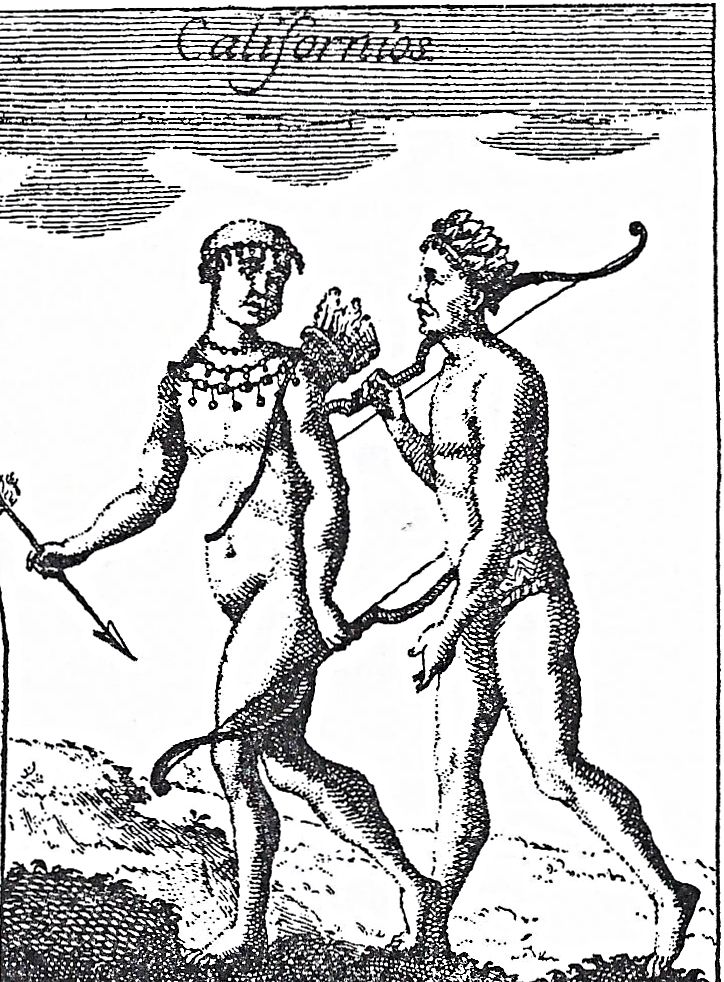
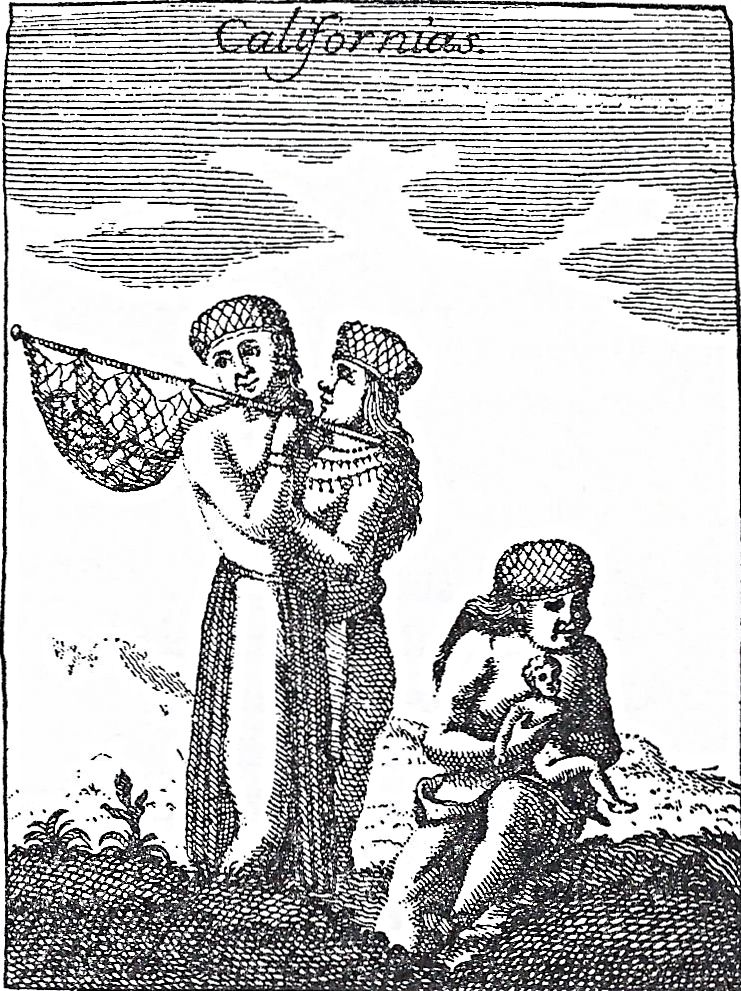
Notice the baby in a carrier-net.
------------------------------------------------------------------------------------------------------------------------------------
From Padre Jakob Baegert 1751-1768 (published in 1772):

A Californian, with his catch of rats.
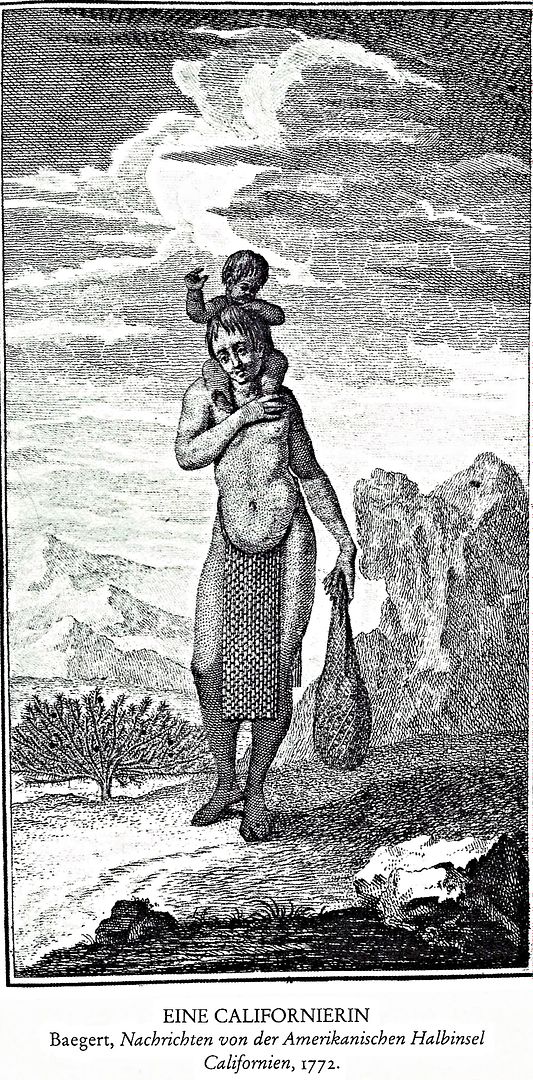
-------------------------------------------------------------------------------------------------------------------------------------
From Padre Ignacio Tirsch 1762-1768 (published in 1972):
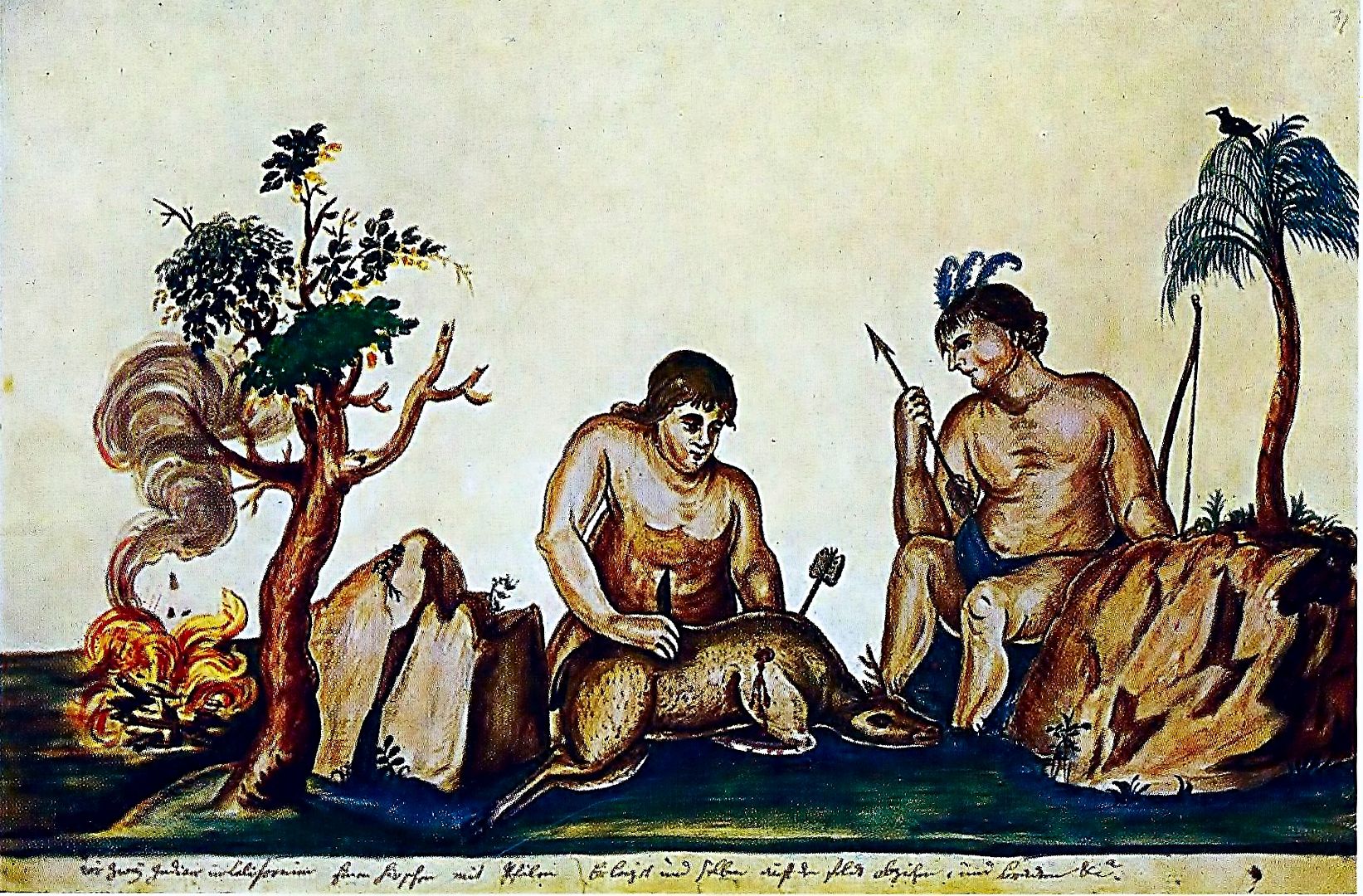
California Indians with a killed deer.
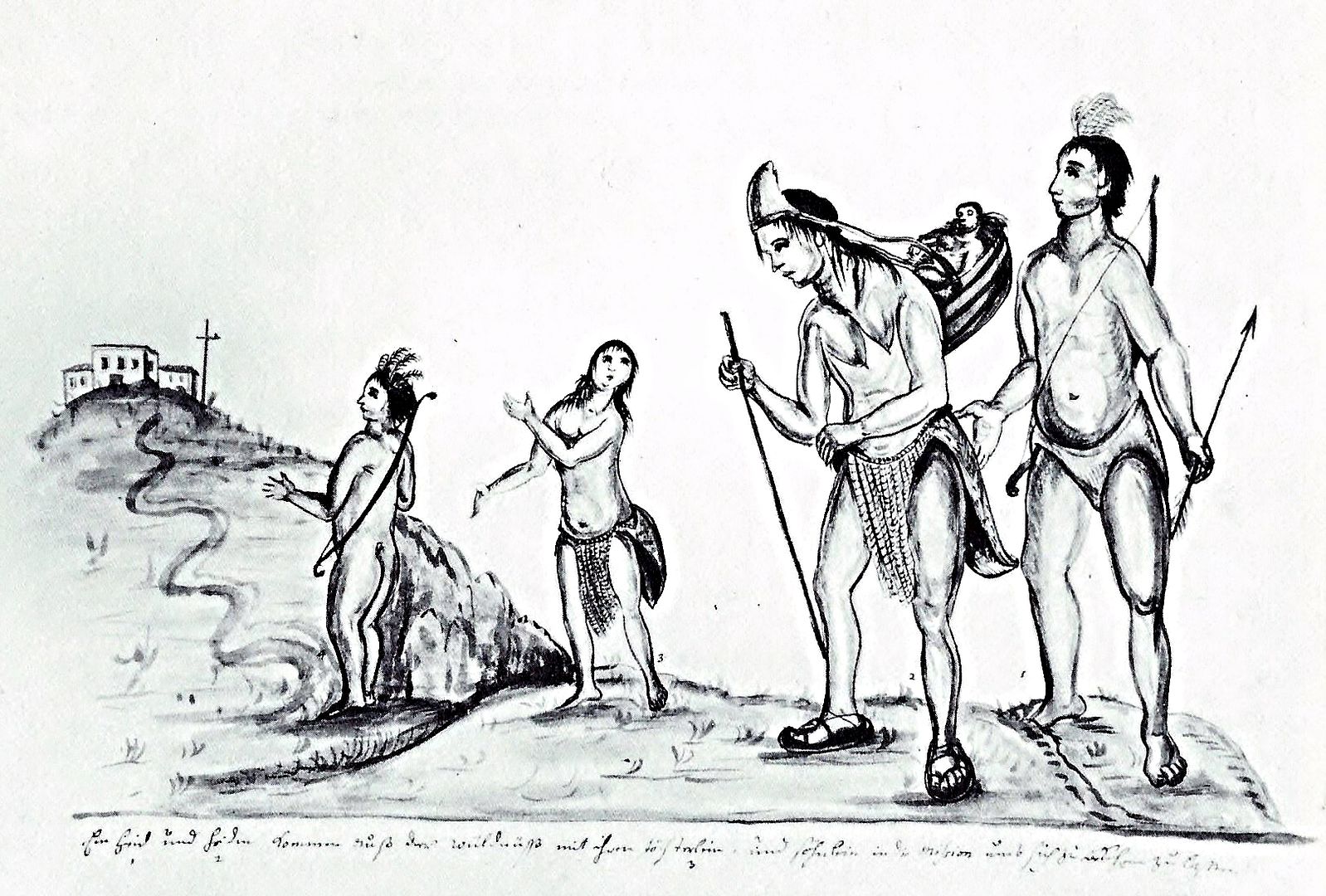
“Out of the wilderness a heathen and his wife are coming with their daughters and son to the mission to be converted.”
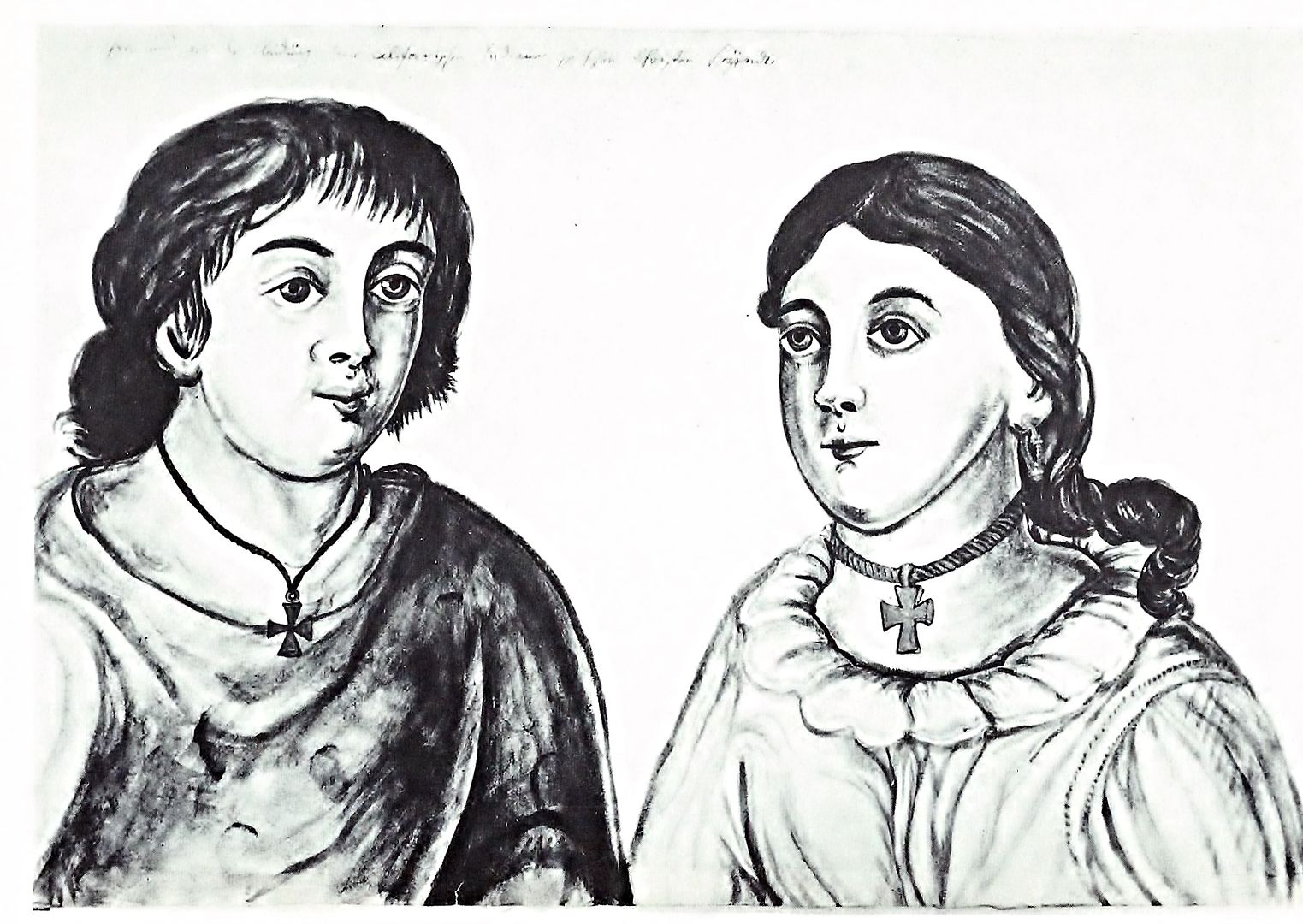
Christianized California Indians
|
|
|
dtbushpilot
Ultra Nomad
    
Posts: 3296
Registered: 1-11-2007
Location: Buena Vista BCS
Member Is Offline
Mood: Tranquilo
|
|
Cool, thanks David.
"Life is tough".....It's even tougher if you're stupid.....
|
|
|
David K
Honored Nomad
        
Posts: 65403
Registered: 8-30-2002
Location: San Diego County
Member Is Offline
Mood: Have Baja Fever
|
|
You're welcome David.
These are some of the illustrations that will appear in the new book.
Padre Ignacio Tirsch (who drew the last three images above) was the last Jesuit missionary at Santiago (and San José del Cabo, which was a visita of
Santiago from 1748 to 1768). So, those are likely how he saw the natives who walked about where you now live!
Here is another, by Tirsch of the Santiago mission circa 1765. The church entrance is just above the cemetery:

The Santiago mission ruins in 1919:

The new mission-site church in 1950:
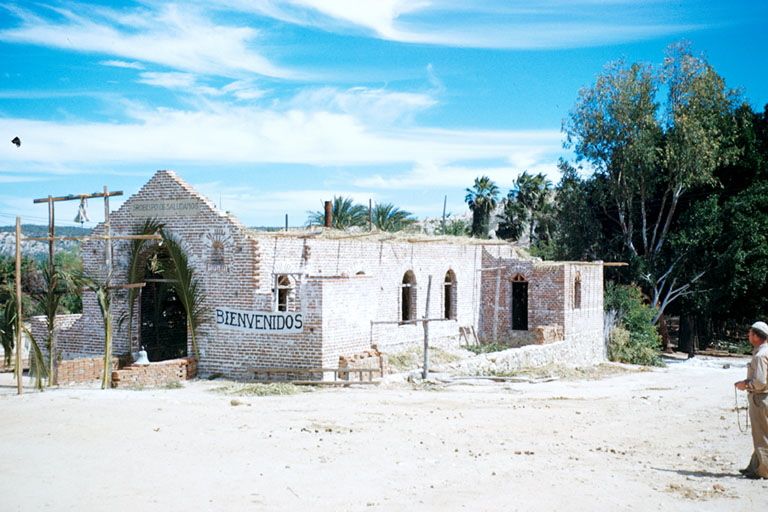
The modern church being built on the mission site in 1957:
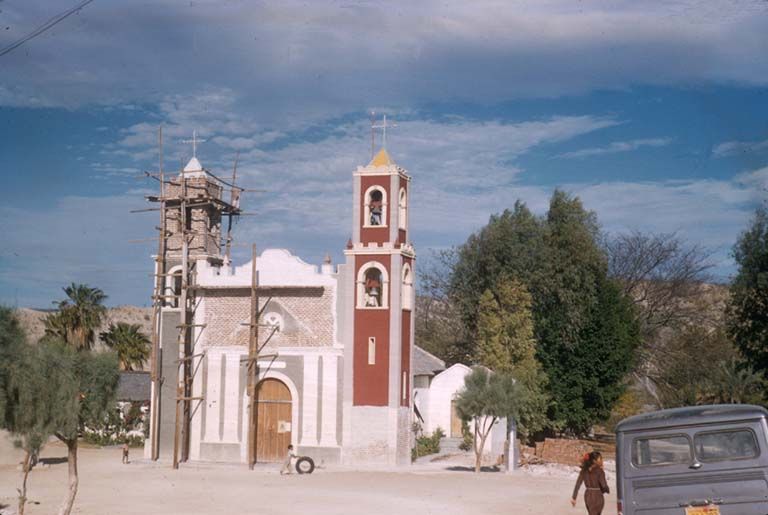
That Santiago church in 2012:
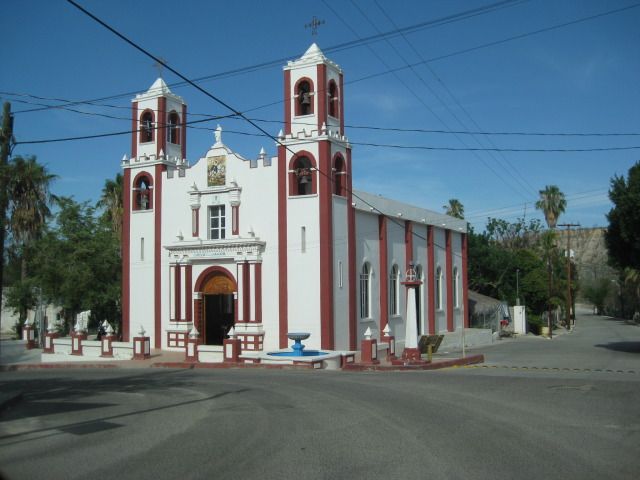
|
|
|
4x4abc
Ultra Nomad
    
Posts: 4454
Registered: 4-24-2009
Location: La Paz, BCS
Member Is Offline
Mood: happy - always
|
|
pretty cool!
Harald Pietschmann
|
|
|
Tioloco
Elite Nomad
     
Posts: 5015
Registered: 7-30-2014
Member Is Offline
|
|
Pretty interesting pictures, David
|
|
|
David K
Honored Nomad
        
Posts: 65403
Registered: 8-30-2002
Location: San Diego County
Member Is Offline
Mood: Have Baja Fever
|
|
Thank you! I think so, too...
|
|
|
Osprey
Ultra Nomad
    
Posts: 3694
Registered: 5-23-2004
Location: Baja Ca. Sur
Member Is Offline
|
|
David, do you have any info about the Indians depicted in your post? Can you tell us where they (and the artists, priests, etc ) were when the
pictures were sketched?
What did they call themselves? Did they speak Yuman? Many descriptions of southern Indians showed them to be much more primitive than the people in
these sketches. Do you think the priests made their converts or potential converts look more noble than they appeared in real life?
|
|
|
monoloco
Elite Nomad
     
Posts: 6667
Registered: 7-13-2009
Location: Pescadero BCS
Member Is Offline
|
|
Those natives definitely look well fed.
"The future ain't what it used to be"
|
|
|
sargentodiaz
Nomad
 
Posts: 259
Registered: 2-20-2013
Location: Las Vegas, NV
Member Is Offline
|
|
Quote: Originally posted by Osprey  | David, do you have any info about the Indians depicted in your post? Can you tell us where they (and the artists, priests, etc ) were when the
pictures were sketched?
What did they call themselves? Did they speak Yuman? Many descriptions of southern Indians showed them to be much more primitive than the people in
these sketches. Do you think the priests made their converts or potential converts look more noble than they appeared in real life?
|
David may correct about this but these appear to be natives of Baja California as depicted by the Jesuits. That being the case, they are likely
Cochimi, Guaycura, or Pericu. Although they spent most of their time scraping for food, they were reported of being "well built." The same held true
for the Indians of Upper California.
|
|
|
David K
Honored Nomad
        
Posts: 65403
Registered: 8-30-2002
Location: San Diego County
Member Is Offline
Mood: Have Baja Fever
|
|
Thank you Lancesf.
I have a little additional data to yours if I may contribute it:
The first TWO (not 4) images come from Padre Miguel Venegas's book. He was a Jesuit writer in Mexico (not Europe) and recorded the activities based on
letters from the peninsula. The first two illustrations appear on his map that was published in 1757. His book was originally written 18 years
earlier.
The second TWO images are from Padre Baegert who was the Jesuit at Mission San Luis Gonzaga from 1751 to 1768 (Guaycura Indians) and while his book
was published in Germany in 1772 it is from his pen.
The final THREE images are from Padre Ignacio Tirsch who was the Jesuit at Mission Santiago from 1763 to 1768 (Pericú Indians) and administered the
visita of San José del Cabo as it was reduced from mission to visita in 1748. Tirsch's art was unknown to the historical world until they appeared on
a Czechoslovakian calendar in 1970!
Yes, Barco's is a good book:
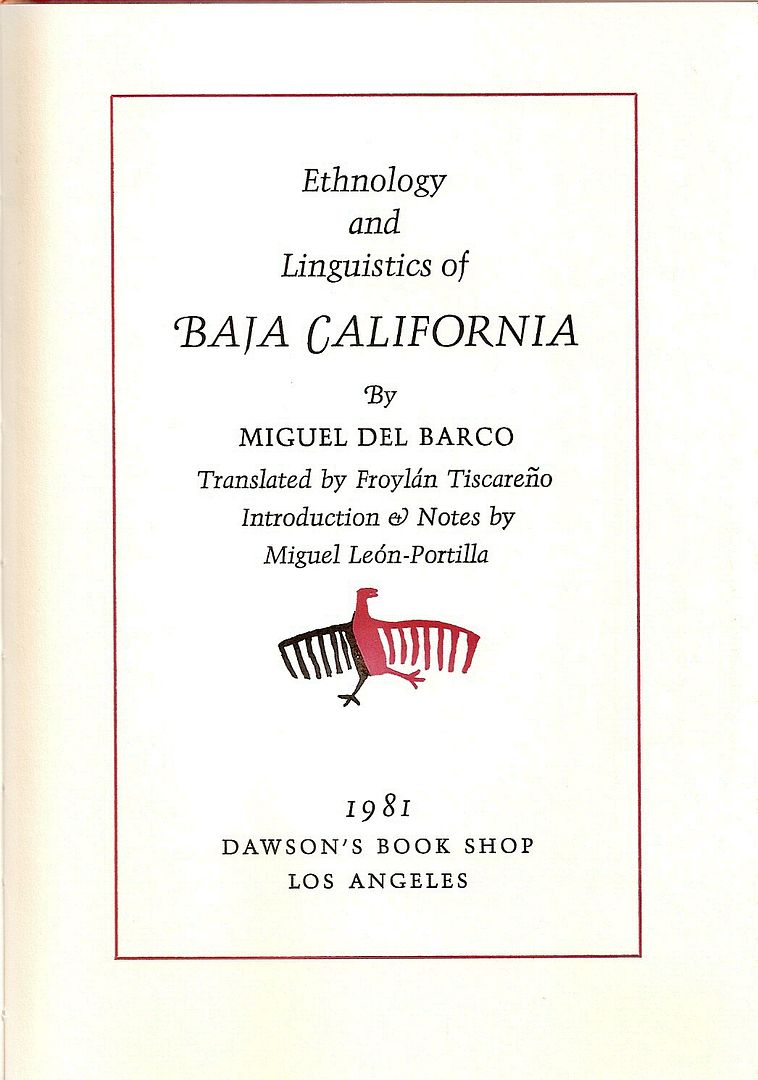
[Edited on 2-13-2016 by David K]
|
|
|
wessongroup
Platinum Nomad
       
Posts: 21152
Registered: 8-9-2009
Location: Mission Viejo
Member Is Offline
Mood: Suicide Hot line ... please hold
|
|
Its to bad ... The camera wasn't around at that time
Enjoy this guys "work" and have a couple of prints ... that I bought from the New York Times ... Photographic collection
Well worth the money ... and they have actually gone up in value ...
Still enjoy looking back in time .... at things
http://www.smithsonianmag.com/history/edward-curtis-epic-pro...
Thanks DK ... and "hunter gathers" were still around in the 1700's in the "America's" ... big time ... Hard to imagine the amount of natural resources
that would have been available in that time period, in certain locations which had not been impacted by European settlers ... or Invaders .. depending
on one's position in the pecking order at that time
[Edited on 2-13-2016 by wessongroup]
|
|
|
Barry A.
Select Nomad
      
Posts: 10007
Registered: 11-30-2003
Location: Redding, Northern CA
Member Is Offline
Mood: optimistic
|
|
Regarding "resources", then and now: I am always fascinated with so-called "before and after" photos when recent photos of wild lands are compared
with photos taken in the 1800's of the exact same spot. Many (most?) times the abundance of vegetation in the "now" photos is vastly more than the
sparse vegetation in the historic photos.
|
|
|
wessongroup
Platinum Nomad
       
Posts: 21152
Registered: 8-9-2009
Location: Mission Viejo
Member Is Offline
Mood: Suicide Hot line ... please hold
|
|
Me too ... Its one of the reason I watch old movies
Check out The Big Trail .. filmed on location in WY in 1930
John Wayne is really, really young
Amazing ... just amazing from a lot of different standpoints
The pictures I got of Curtis were from: early 1900's ... hard to find much earlier than that ... here is a cool site
https://www.archives.gov/research/american-west/
I'll bet the Salmon runs were a bit different ...  
Not to mention the Buffalo ...
And Owens Valley was a paradise... compared to now, its still pretty nice ... but, what it must have been like in 1710  
[Edited on 2-14-2016 by wessongroup]
|
|
|
Barry A.
Select Nomad
      
Posts: 10007
Registered: 11-30-2003
Location: Redding, Northern CA
Member Is Offline
Mood: optimistic
|
|
Quote: Originally posted by wessongroup  | Me too ... Its one of the reason I watch old movies
Check out The Big Trail .. filmed on location in WY in 1930
John Wayne is really, really young
Amazing ... just amazing from a lot of different standpoints
The pictures I got of Curtis were from: early 1900's ... hard to find much earlier than that ... here is a cool site
https://www.archives.gov/research/american-west/
I'll bet the Salmon runs were a bit different ...  
Not to mention the Buffalo ...
And Owens Valley was a paradise   |
There are 100's of old photos from the 1869 and 1870's river trips of John Wesley Powell (Green and Colorado Rivers), and at least one huge book of
photos taken about 1965 or so of the duplicate shots-----------and they are amazing!!! I have those books somewhere, and I will have to dig them up
again. LOL
Owens Valley is STILL a "paradise" in my book. The "Salmon" have taken a huge hit in the coastal rivers, but vastly more trout in Owens Valley now,
and lots of deer and elk, birds, and other creatures. 2 years ago my son and I were up on top of the Coyote Plateau, west of Bishop, and laughed a
lot as the Indian's were all over the place hunting from ATV's-----we did not see one white-eye up there that day. LOL
|
|
|
wessongroup
Platinum Nomad
       
Posts: 21152
Registered: 8-9-2009
Location: Mission Viejo
Member Is Offline
Mood: Suicide Hot line ... please hold
|
|
Haven't been up ... since my last trip, which was just before I went in for fusion surgery on my back ... that was 2001
Used to make it up just about every year, opening day was a tradition   ... but, would try and make it up at least one time in addition to opening day ...
Lived for 10 years on the others side ... and used that side ... but, I've always liked the East side of the Sierras over the West side .. not sure,
maybe cuz of the Westerns filmed around Lone Pine ... as a kid it WAS THE PLACE both my brother and I couldn't wait to get to every summer with the
old man ... but, would try and make it up at least one time in addition to opening day ...
Lived for 10 years on the others side ... and used that side ... but, I've always liked the East side of the Sierras over the West side .. not sure,
maybe cuz of the Westerns filmed around Lone Pine ... as a kid it WAS THE PLACE both my brother and I couldn't wait to get to every summer with the
old man
Glad to hear things are getting better ...as it was looking a bit worn out at that time ... hope the Court Ruling has helped on the water pulled by LA
from the region
Didn't get back into the back country ... just the usual ... Owens River, Convict, South and North Lakes and some on Bishop Creek .. a favorite place
to camp and fish
Our jumping off point when growing up ... and in my 20's to the John Muir Trail
Had starting liking Baja better by that time, in the 60's .. less people and a lot of good fishing too
Thanks had forgot about Powell ... He did some pretty amazing stuff ... will check him out  
Sorry DK for the hijack ... Let's get back to Baja ... as it is still pretty cool in places too and the people who were able to (make a living there
are still interesting)  
btw ... good to see ya posting again Barry
[Edited on 2-14-2016 by wessongroup]
[Edited on 2-14-2016 by wessongroup]
|
|
|
David K
Honored Nomad
        
Posts: 65403
Registered: 8-30-2002
Location: San Diego County
Member Is Offline
Mood: Have Baja Fever
|
|
Quote: Originally posted by Lancesf  | Sorry didn't mean to refer to the place Venegas wrote, just to the engravings themselves. Although Venegas wrote at an earlier time, the book
itself was not published until 1757 and contains those engravings. The engravings in Venegas were done in Europe, weren't the engravings in Baegert
done in Germany for publication there?
|
Baegert in the other 16 Jesuits were removed from California like prisoners. If he drew that while in California (what we call 'Baja' today) it likely
would have become toilet paper to the soldiers, as what happened to some mission records in Norther Baja?
So yes, those two very well could have been drawn in Germany between the time Baegert was released by Spain and when he wrote the book (~1771). If it
was Baegert's artwork or someone doing it under his direction, I don't know.
Again, this is pretty much ALL we have to show how the Indians looked, accurate or exaggerated?
Obviously, the final image of a Christian Pericú Indian man and woman looks no different that any other Christian couple, in Tirsch's eyes. Hopefully,
it showed the Native Californians as regular people to other Spaniards or Europeans and not as "savages" as the Dominicans have been quoted calling
them.
|
|
|
wessongroup
Platinum Nomad
       
Posts: 21152
Registered: 8-9-2009
Location: Mission Viejo
Member Is Offline
Mood: Suicide Hot line ... please hold
|
|
Back in the 50's hardly anyone went down south of Ensenada
And most that got down to the some of the nice locations "flew"
Tough "sledding" back in those really old days ... until the "Highways" got in
It was what I liked about Baja as a kid of 10 ... nothing to worry about ... other than what one had already learn about : snakes, sharks, stickers,
bears, "cats", look out for strangers .. et al ... pretty basic stuff .. work's just about any place ya go  
Really cool your dad took pictures ... and something you picked up and carried over .. From you old man .. nice touch
|
|
|
wessongroup
Platinum Nomad
       
Posts: 21152
Registered: 8-9-2009
Location: Mission Viejo
Member Is Offline
Mood: Suicide Hot line ... please hold
|
|
Thanks ... An interesting painting technique used by Padre Ignacio Tirsch in that first illustration "California Indians with a killed deer" ...
for that time period
Would appear he was really ahead of his time by a few hundred years ... appears he did do any more .. too bad
|
|
|
David K
Honored Nomad
        
Posts: 65403
Registered: 8-30-2002
Location: San Diego County
Member Is Offline
Mood: Have Baja Fever
|
|
Quote: Originally posted by wessongroup  | Thanks ... An interesting painting technique used by Padre Ignacio Tirsch in that first illustration "California Indians with a killed deer" ...
for that time period
Would appear he was really ahead of his time by a few hundred years ... appears he did do any more .. too bad |
There's an entire Dawson series book with Tirsch's art.
In my new book I also include his paintings of Santiago and San José del Cabo.
|
|
|
wessongroup
Platinum Nomad
       
Posts: 21152
Registered: 8-9-2009
Location: Mission Viejo
Member Is Offline
Mood: Suicide Hot line ... please hold
|
|
Thanks .. will check it out ... glad you read between the lines
This guy did some photographic work from the civil war and into the next few decades .. .His work is also interesting to view a time long gone .. in
photographs
https://en.wikipedia.org/wiki/Timothy_H._O%27Sullivan
I have his shot of Canyon de Chelly ... preferred it over Curtis's ... did like a couple of Curtis that I got ... had to imagine native american's
running around horse back as late as 1910
[Edited on 2-14-2016 by wessongroup]
|
|
|
| Pages:
1
2
3 |

